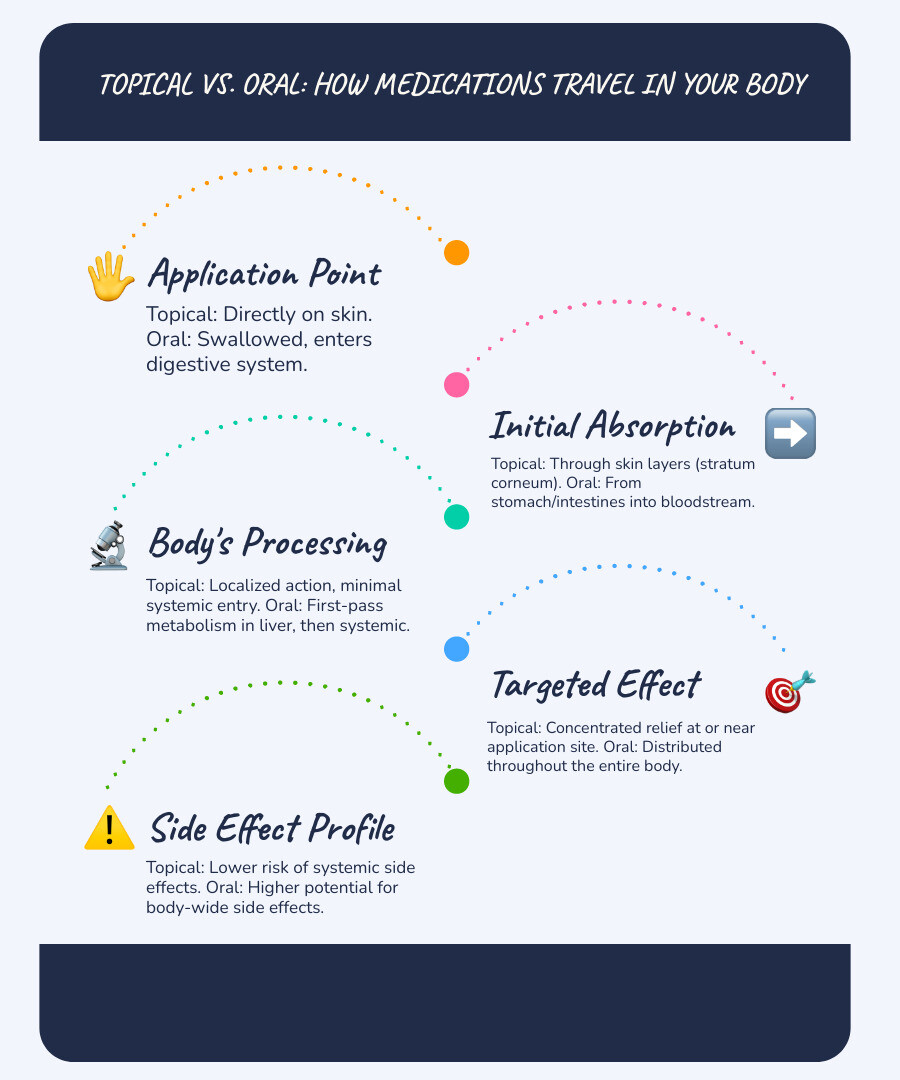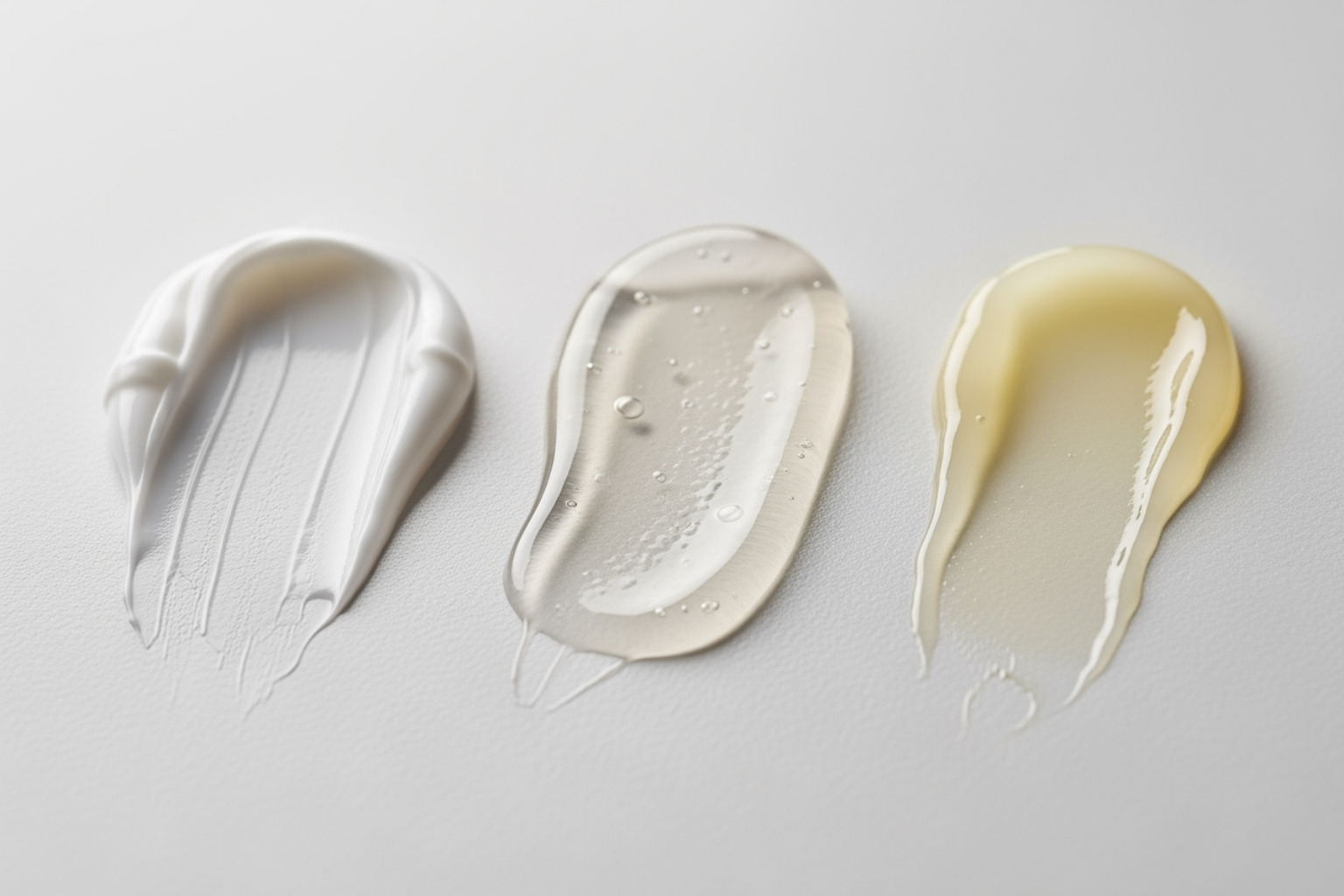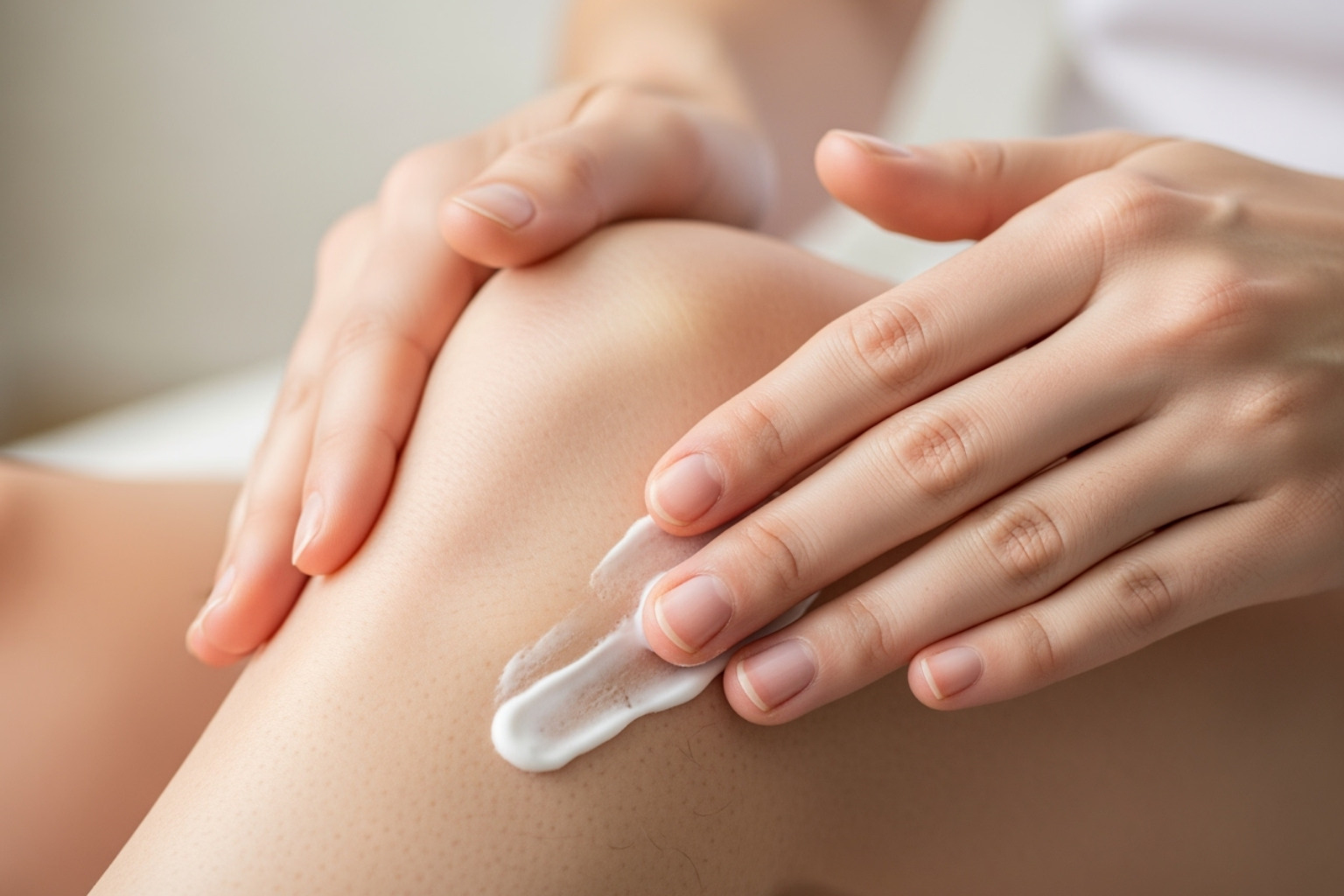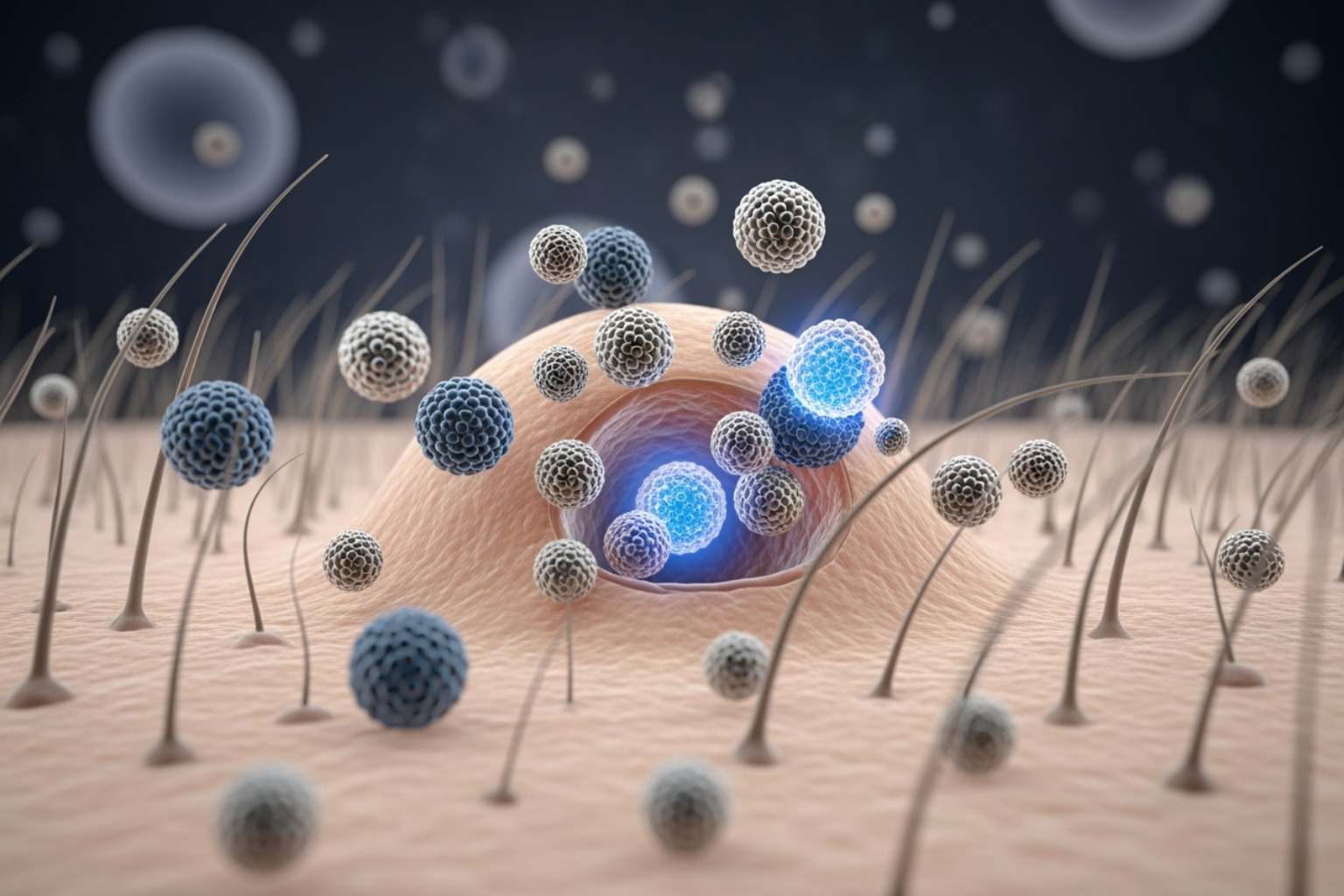Understanding Topical Creams: Your Gateway to Targeted Pain Relief
Topical creams are medications applied directly to the skin to deliver therapeutic effects at or near the site of application. Unlike oral medications that travel through your entire body, topical creams work locally, targeting pain and inflammation right where you need relief. This localized approach minimizes whole-body exposure to active ingredients, bypasses the digestive system, and offers a convenient, easy-to-use alternative to pills or needles.
Topical medications come in various forms—creams, ointments, gels, and more—each designed to overcome the skin's protective outer layer, the stratum corneum. Whether you're an athlete with post-workout soreness, dealing with chronic nerve pain, or experiencing joint discomfort, topical creams are a powerful tool in modern pain management.
I'm Tony Enrico, and through my work with Neuropasil, I've dedicated years to developing advanced topical creams using natural ingredients like menthol, aloe, and urea. This guide will help you understand the science behind these products and how to use them effectively.

How Topical Creams Work: The Science of Skin-Deep Relief
For a topical cream to work, its active ingredients must penetrate the skin's outermost layer, the stratum corneum. This barrier, made of dead skin cells and lipids, is challenging to bypass. The process, known as dermal absorption, allows drugs to reach target tissues like nerves, muscles, or joints.
Drugs primarily use the intercellular pathway, weaving between skin cells. Less common routes are the transcellular pathway (through cells) and the transappendageal pathway (via hair follicles and sweat glands). The goal is a local therapeutic effect, concentrating the medication where it's applied with minimal entry into the bloodstream, which reduces systemic side effects.
Several factors influence absorption. Hydrated and warmer skin is more permeable. The drug's own properties, like being fat-soluble (lipophilic) and having a low molecular weight, are critical for passing through the skin's lipid barrier. Skin condition, age, and even the location on the body also affect how well a cream is absorbed. For a deeper dive, you can explore the science of dermal absorption or our insights on how creams for joint pain work.
The Difference Between Creams, Ointments, Gels, and Lotions
Choosing the right format can make all the difference. Each type has distinct properties affecting feel and absorption.
| Type | Water/Oil Content | Texture | Absorption & Feel | Best Use Case |
|---|---|---|---|---|
| Cream | Balanced (oil-in-water or water-in-oil emulsion) | Light, smooth, non-greasy | Absorbs well, moisturizes, less occlusive | General use, mild-to-moderate conditions, larger areas |
| Ointment | High oil (e.g., 80% oil, 20% water) | Greasy, thick, semi-solid | Highly occlusive, drives medication deeply, very moisturizing | Dry, thick skin, chronic conditions, intense hydration, often higher potency for steroids |
| Gel | High water, often alcohol-based | Clear, non-greasy, quick-drying | Fast absorption, cooling sensation, non-occlusive | Oily skin, hairy areas, acute inflammation, quick relief |
| Lotion | High water, low oil | Thin, watery, easily spreadable | Spreads easily over large areas, light moisturization | Large body areas, mild conditions, hairy skin |
| Foam | Gas dispersed in liquid | Light, airy, quickly dissipates | Rapidly absorbed, good for hairy areas | Scalp treatments, sensitive skin |
| Patch | Solid adhesive matrix | Thin, flexible, adheres to skin | Sustained systemic or local release over time | Continuous drug delivery, long-lasting effect |
Creams are balanced and versatile, while ointments are heavy-duty, creating an occlusive layer that traps moisture and drives medication deep into the skin. Gels offer quick, cooling relief, and lotions are ideal for covering large areas. Foams and patches provide specialized delivery for specific needs. You can learn more in our guide to different topical formats.
How the Base Formulation Impacts Effectiveness
The base of a topical cream is more than a carrier; it's a critical component that influences effectiveness. The occlusion effect, most prominent with oily ointments, traps moisture and can significantly boost the absorption and potency of an active ingredient. A base must also have the right solubility to release the drug onto the skin. Finally, patient preference matters—if you dislike a greasy or sticky texture, you're less likely to use it consistently. Our formulators carefully select bases to ensure our topical creams provide optimal skin penetration and deliver the relief you expect.

Common Active Ingredients in Pain Relief Creams
Understanding the active ingredients in topical creams helps you choose the right product. Different ingredients work in different ways to bring you relief.

Counterirritants
Counterirritants create a new sensation (like cooling or warming) on the skin to distract your brain from the underlying pain.
- Menthol: Derived from peppermint, it triggers cold receptors for a refreshing, cooling sensation. It's a cornerstone of our Neuropasil formula. Discover the power of Menthol and its benefits.
- Camphor: Provides both cooling and warming sensations, acting as a mild local anesthetic.
- Methyl Salicylate: Related to aspirin, it creates a warming sensation by increasing blood flow, which is comforting for sore muscles.
Natural Ingredients and Other Agents
Beyond counterirritants, other ingredients target pain pathways or reduce inflammation directly.
- Capsaicin: From chili peppers, it depletes Substance P, a chemical that transmits pain signals. It's effective for nerve pain and arthritis but requires regular use. Learn more in our deep dive into Capsaicin.
- Aloe Vera: A soothing plant extract with anti-inflammatory properties that moisturizes and calms irritated skin. It's a key component in all Neuropasil products.
- Urea: A humectant and emollient that hydrates skin and softens rough areas, improving the absorption of other active ingredients.
- Lidocaine: A local anesthetic that temporarily blocks nerve signals, providing fast-acting numbing relief.
- Arnica: A traditional herbal remedy popular for reducing bruising, swelling, and muscle soreness.
- NSAIDs (Non-Steroidal Anti-Inflammatory Drugs): Ingredients like diclofenac (e.g., Voltaren) block the production of pain- and inflammation-causing chemicals called prostaglandins.
- Corticosteroids: Powerful anti-inflammatories like hydrocortisone used for skin conditions like eczema and psoriasis, requiring careful use.
At Neuropasil, our blend of Aloe, Urea, and Menthol provides immediate cooling relief and deep, moisturizing comfort, addressing both nerve and muscle pain from multiple angles.
Choosing and Using Topical Creams for Maximum Benefit
Choosing the right topical cream and applying it correctly is key to effective pain relief.

Which Topical Cream is Best for Your Pain?
The ideal cream depends on your type of pain.
- Muscle Pain: Counterirritants like menthol and camphor offer immediate relief. For inflammation, topical NSAIDs like diclofenac are effective. See our guide to the best creams for muscle pain reviewed.
- Nerve Pain: Ingredients that block pain signals are best. Lidocaine provides a numbing effect, while capsaicin can offer long-term relief. Explore options in the complete guide to nerve pain relief creams.
- Arthritis Pain: Topical NSAIDs are a gold standard for reducing joint inflammation. Capsaicin is also a good option for chronic pain. Find more advice in our article on finding comfort with arthritis creams.
- Strains and Sprains: Counterirritants and NSAIDs manage pain and inflammation. Arnica is also a popular choice for bruising and swelling.
Benefits of Topical Creams vs. Oral Medication
Why choose a cream over a pill? The advantages are significant.
- Targeted Relief: Delivers medication directly to the site of pain.
- Lower Risk of Systemic Side Effects: Minimal absorption into the bloodstream reduces whole-body side effects.
- Bypasses First-Pass Metabolism: Avoids breakdown by the liver, increasing bioavailability.
- Avoids GI Irritation: A safer option for those with sensitive stomachs.
- Ease of Use: Simple application can improve patient compliance.
While oral medications have their place, topical creams offer a powerful, localized, and often safer alternative. We explore this further in our comparison of oral vs. topical options.
How to Safely Apply Topical Creams for Optimal Results
Proper application maximizes relief and ensures safety.
- Start with clean, dry skin to ensure nothing hinders absorption.
- Apply a thin layer and rub it in gently until absorbed. More is not better.
- Wash your hands thoroughly after application to avoid transferring the cream to your eyes or mouth.
- Avoid broken or irritated skin, as this can increase absorption and side effects.
- Do not cover the area with bandages or tight clothing unless directed by a doctor.
- Never use heating pads or ice packs on the treated area, as this can cause skin irritation or burns.
- Follow the label instructions for dosage, frequency, and duration of use.
- Store your cream properly at room temperature and check the expiration date.
Advanced Insights and Future of Topicals
The science of topical creams is constantly evolving, with innovations aimed at delivering relief more effectively.

The Role of Penetration Improvers
To help active ingredients bypass the skin's tough stratum corneum, formulations often include penetration improvers. These ingredients temporarily make the skin more permeable.
- Dimethyl sulfoxide (DMSO) is a powerful improver that can carry other molecules through the skin, but its potency requires careful medical oversight.
- Alcohols like ethanol disrupt the skin's lipid layers, while even water helps by hydrating the skin.
- Surfactants and natural terpenes from essential oils can also improve penetration.
The goal is to balance effectiveness with safety, avoiding irritation. For more technical details, see this scientific review of penetration enhancement techniques.
Regulatory Considerations and Emerging Trends
The FDA strictly regulates topical creams, distinguishing between mass-produced products and custom-compounded preparations. The future of topical delivery is exciting, with several emerging trends:
- Emulgels: These hybrid gel-cream formulations offer superior skin adherence and drug delivery for pain relief.
- Nanotechnology: Encapsulating drugs in microscopic particles helps them penetrate skin barriers more effectively.
- Liposomes: These tiny vesicles, similar to our own cell membranes, can carry medications more naturally through the skin.
- Smart Delivery Systems: Future creams may respond to bodily signals like inflammation, releasing medication only when needed.
These advancements promise smarter, more targeted delivery, maximizing benefits while minimizing side effects. At Neuropasil, we monitor these developments to continuously improve our formulations.
Frequently Asked Questions about Topical Creams
Here are answers to the most common questions we receive about topical creams.
How long do topical creams take to work?
The time to feel relief varies by ingredient.
- Counterirritants (menthol, camphor) and lidocaine work quickly, often within minutes, providing a cooling or numbing sensation.
- NSAID creams (diclofenac) may take 30-60 minutes, with full anti-inflammatory effects building up over time with regular use.
- Capsaicin creams require patience. They must be applied consistently for days or weeks to achieve their full pain-reducing effect.
Factors like skin thickness and the severity of your condition can also influence these timelines.
Can I use topical creams if I'm pregnant or breastfeeding?
Always consult your doctor or healthcare provider before using any topical cream during pregnancy or while breastfeeding. While topical creams are designed for local action, small amounts of active ingredients can be absorbed into the bloodstream and potentially affect your baby. Some ingredients are known to be unsafe, while others lack sufficient human studies. Your doctor can provide personalized advice based on your health history and the specific product, ensuring safety for both you and your child.
Are there any major side effects to watch for?
While generally safer than oral medications, topical creams can cause side effects, mostly localized to the skin.
- Skin Irritation: The most common issue is redness, itching, dryness, or a burning sensation. This is expected to some degree with counterirritants, but if it becomes painful, stop use.
- Allergic Reactions: Less common but more serious signs include hives, a severe rash, or swelling. Discontinue use immediately and contact a doctor.
- Skin Thinning: Prolonged use of strong corticosteroid creams can thin the skin, leading to easy bruising or stretch marks.
- Increased Sensitivity: Some ingredients can make skin more sensitive to heat. Never use a heating pad with pain creams.
Always read the product label for specific warnings. If you experience any severe or persistent side effects, stop using the cream and consult your healthcare provider.
Conclusion
You now have a strong understanding of how topical creams offer a powerful alternative to oral medications. Their greatest advantage is the ability to deliver targeted relief directly to the source of your discomfort. This localized approach means fewer systemic side effects and no stomach upset, making them a safe and effective choice for many types of pain.
Whether you're managing muscle soreness, nerve pain from conditions like neuropathy or sciatica, or the stiffness of arthritis, the right topical cream can significantly improve your quality of life.
At Neuropasil, we've perfected our formulas with a unique blend of Aloe, Urea, and Menthol. This combination works synergistically to provide immediate cooling relief while hydrating the skin and enabling deeper penetration for long-lasting comfort. Our products are trusted by athletes and individuals seeking relief from a wide range of pain conditions.
If you're ready to experience targeted, natural relief, explore our range of topical pain relief solutions and find how Neuropasil can help you move freely again.
References
This guide draws on scientific research and medical expertise to provide accurate information about topical creams. The following sources were consulted for information on dermal absorption, formulation science, and active ingredients.
- National Academies Press (US): Compounded Topical Pain Creams
- Benson, H.A.E. (2005): Transdermal drug delivery: penetration enhancement techniques
- American Academy of Allergy, Asthma & Immunology
- Cleveland Clinic
- GoodRx Health
- DailyMed (FDA Label Information)
- Haleon Manufacturer Resources
- Veterans Affairs Health Library
- American Chemical Society
- OrthoCanada
We believe in transparency and evidence-based recommendations. These resources are provided for your further exploration.













